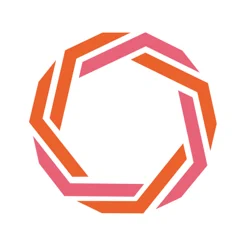
Diversity and inclusion in the gaming industry
Interviews
Marco Calcaterra, Vertical Practice Lead at RWS, highlighted an often-overlooked work environment – the world of gaming. Though not traditionally a diverse industry, changes are increasingly taking place to make the environment more inclusive, with recent research indicating a spike in workplace diversity.

Image Credit: Canva
Historically, the gaming world has not always been the most diverse environment. The industry was dominated by white men, particularly during the gaming boom of the 90s and, perhaps unsurprisingly, they created games that predominantly targeted a cisgender white male audience. IGN’s 2009 list of the Top 100 game creators of all time, in which only two women were mentioned, provides clear evidence of this.
In the same year, according to the International Game Developers Association, only 11.5% of the people working in video games identified as female. More encouragingly, the 2022 UK Games Industry Census by trade body Ukie shows that the gaming workforce in the UK has become much more diverse over time. The gender gap is still there but, with 3% non-binary and 30% female representation, we’re definitely moving towards a more balanced scenario.
This new balance is reflected not only in the wider range of experiences that can be found in modern games, but also in an increased focus on diversity and inclusion by videogame developers and publishers. In EA’s battle royale game Apex Legends, for example, around 50% of the characters are female, a third are not heterosexual and more than half are not of white ethnicity. This is just one example of diversity in gaming, but it provides a clear sign of the new focus on inclusivity that was previously lacking in the sector.
This new balance also has an impact on localization. The gaming audience has become bigger and more diverse and game publishers want to ensure that no customer feels excluded by their product. Non-binary characters are now commonly represented in games, for example, with some games allowing you to select a non-binary identity as a player character. Such situations can be relatively easy to approach in English, thanks to solutions like the use of ‘they/them’ pronouns, but things get much more complicated if the game needs to be localized to gendered languages like Italian or French. In many cases, the translators will have to learn and translate using complex placeholder systems put in place by the developers. In games where the source text lacks these systems, they might need to resort to expressions and idioms that are as gender neutral as possible. This can be easier said than done.
The client always has the last word on how to approach similar challenges but, as translators, we can have an active role in raising awareness about the peculiarities of gendered languages and suggesting innovative solutions for gender neutrality and inclusivity based on current local trends. Translation can, after all, contribute to shaping languages. Nowadays, it is not uncommon for game developers and publishers to hire diversity and inclusion consultants and even contact Language Service Providers and translators at pre-production stage, to make sure that the systems they are putting in place allow the same level of inclusivity in both the source text and the target languages.
While everyone agrees with the premise that language and translations should be as inclusive as possible, the actual solutions are not always clearly defined for every language and situation. In Italy, for example, some book publishers, article editors and translators started using the schwa character (‘ə’, also known as mid central vowel) to adopt a more neutral language when referring to readers or groups of people. To give a practical example, the translation for ‘you all’, which in standard Italian would translate to the purely masculine form ‘voi tutti’, would become ‘voi tuttə’ using the schwa. This variation was used in the Italian version of the indie game Neo Cab and, while unorthodox, it was appreciated by the target audience and considered appropriate for the game and setting.
Diversity and inclusion are topics that are becoming increasingly prominent in localization and gaming is one of the sectors that is already pioneering possible solutions for the challenges that will shape the future of language.
